Keeping your Pets Safe Through the Holiday Season
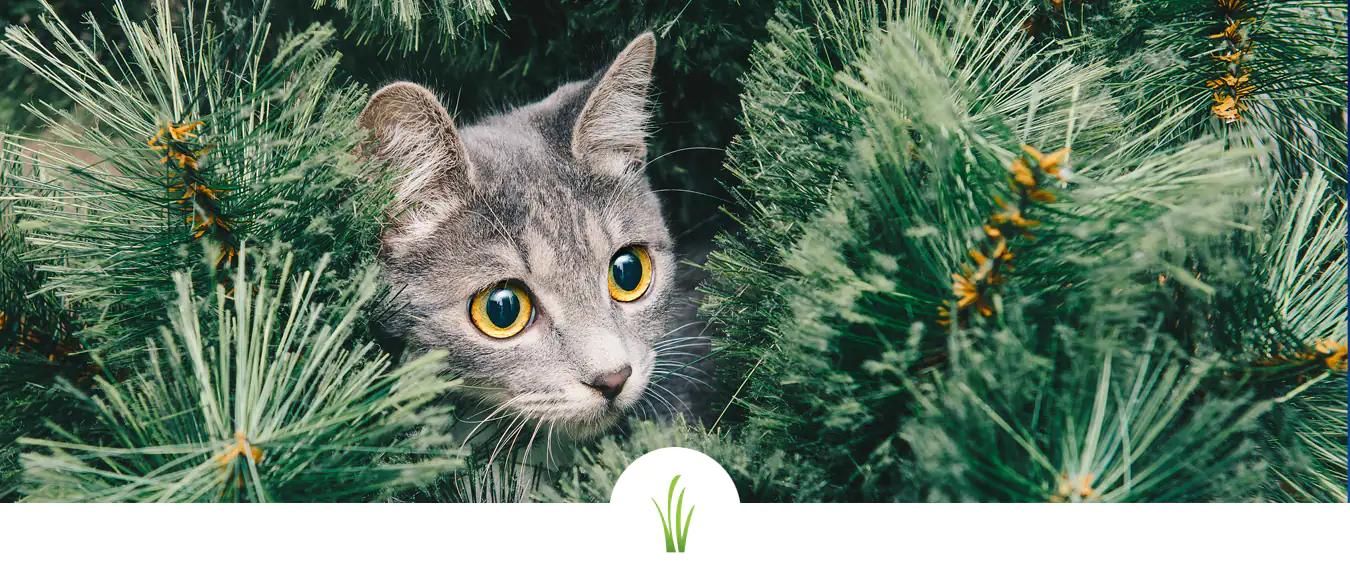
Each year when the holiday season rolls around we humans follow a number of traditions that involve decorating our homes to add to the festive atmosphere. While we all learn from an early age that care must be taken to prevent such decorations from posing a hazard, there are a few extra precautions that should be taken when pets are added to the family.
Many pets become intensely curious when something new is introduced into their environment – this is a natural reaction and is in fact an important aspect of their survival skills. As you may have noticed, telling your cat or dog to “stay away” from the decorations is a mostly futile exercise. They may heed your command at first - or at least while you’re in the room - but at some point they will be left alone with all these shiny, sparkly objects and interesting new smells to investigate, so the better approach is to let them explore as much as they want to, while you’re present to monitor the action.
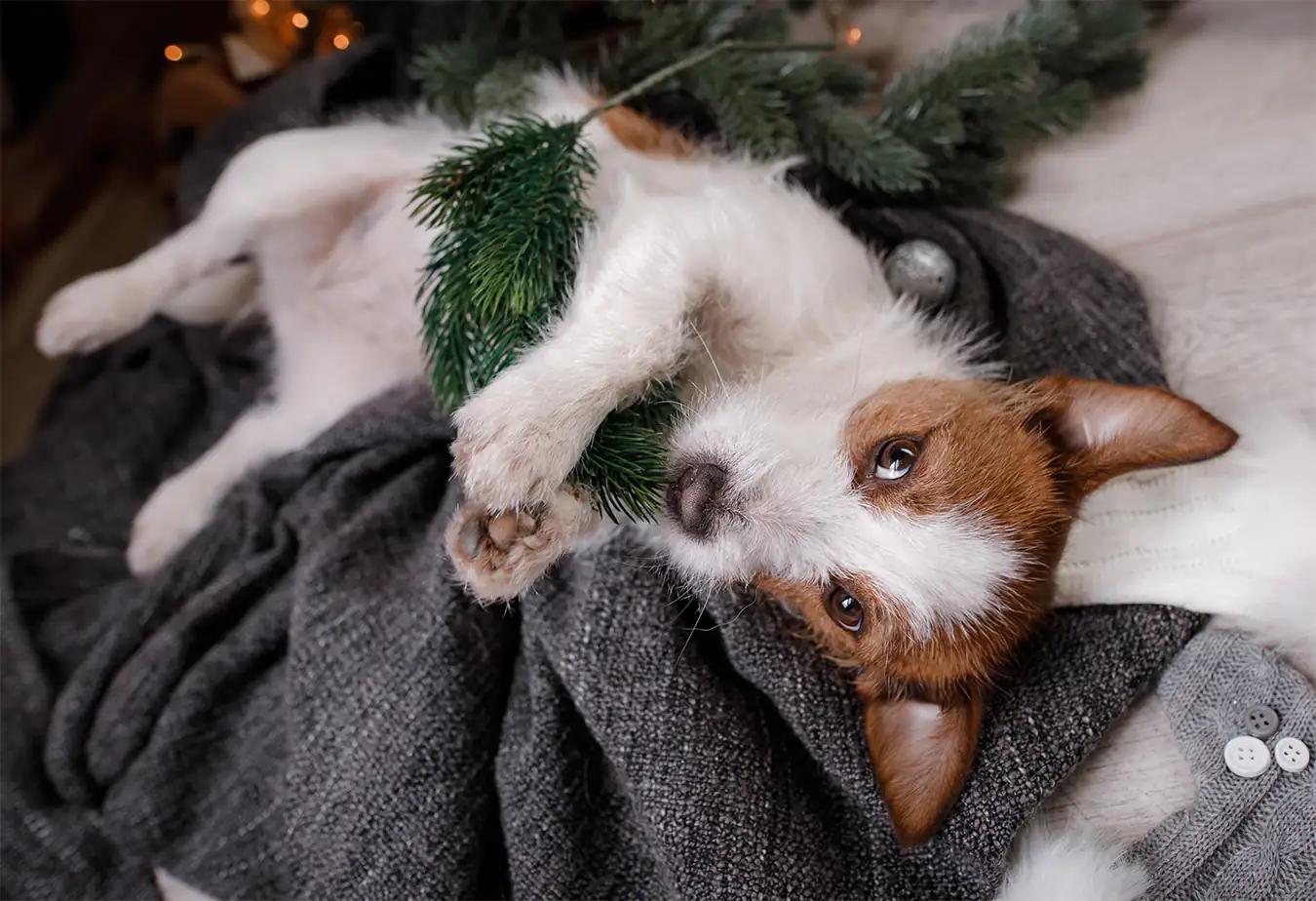
Let’s take a look at some customary decorations that could potentially be harmful, as well as a few that are definitely dangerous.
- Christmas trees Real trees smell fabulous and look beautiful, but many varieties of fir are toxic to animals. Also, there’s a good reason the “needles” are so-named: they are very sharp and can cause real damage to an animal’s nose, mouth, throat and digestive tract. It may help reduce the likelihood of ingestion to place the tree on a table instead of right down on the floor, as long as dropped needles are swept up regularly. It’s also very important to secure the tree in a good, solid base to prevent tipping, which can happen easily enough if a limb or attached garland, say, is pulled on. There may be a multitude of funny videos showing cats climbing the Christmas tree – and they are often hilarious - but it’s a practice that should not be encouraged, as it’s the exact opposite of “funny” when the tree comes toppling down!
Another caution regarding Christmas trees is the water a real tree needs to stay fresh: the tree may have been treated with fertilizers, pesticides or other chemicals designed to increase longevity, and many of these will make your pet sick. Make sure the container of water is covered well enough that your pet can’t use it as a holiday punch bowl – after all, they have every reason to think a bowl of water placed on the floor is intended for them!
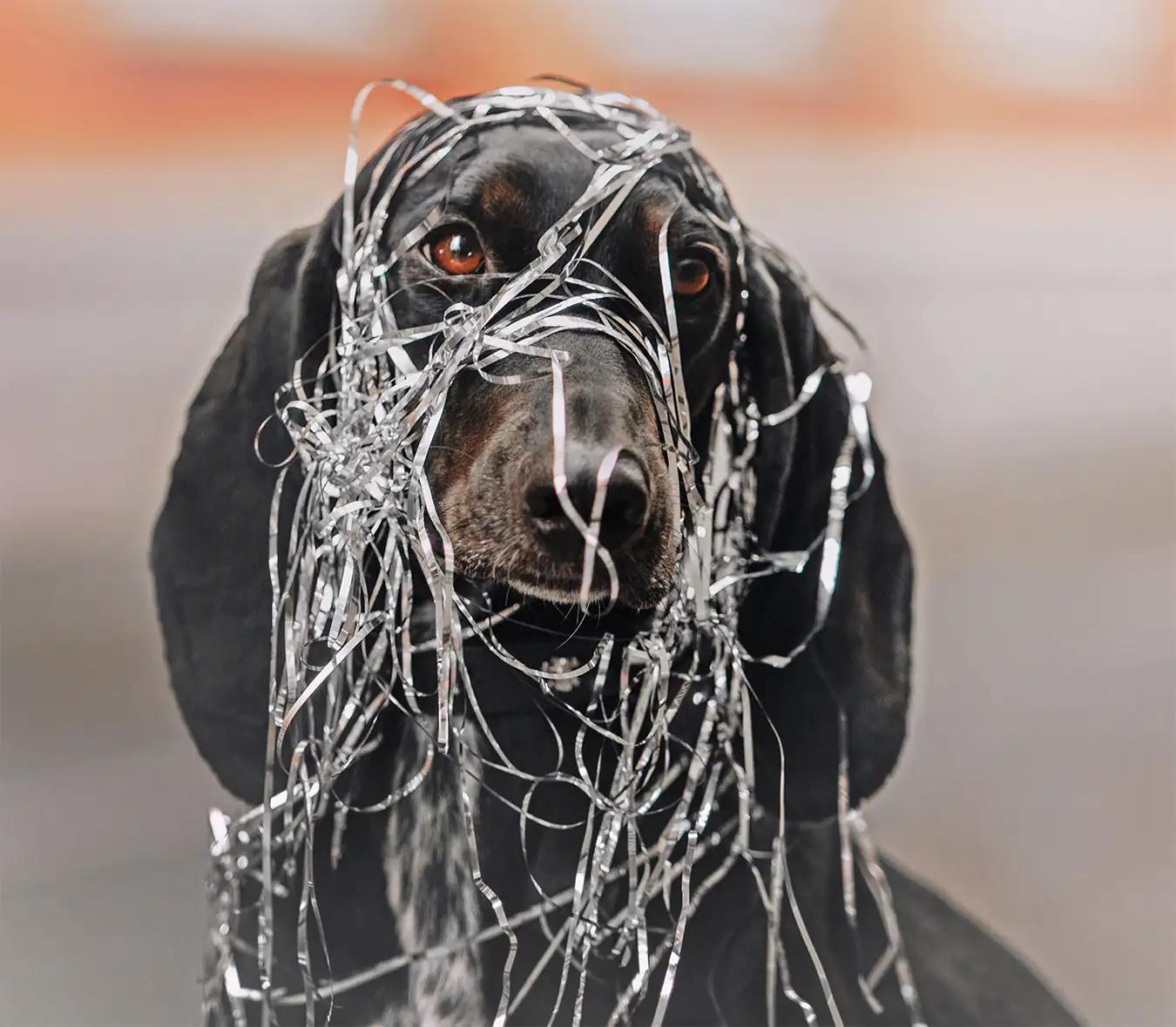
And one last point about tree decorations: the lurking menace more commonly referred to as “tinsel.” If you have pets and have decorated with tinsel, there’s a good chance you have also had the distasteful yet oddly fascinating experience of helping to remove a strand of said tinsel from your pet’s butt. Since it’s indigestible tinsel is not toxic per se, but it can still be very dangerous. If you think your cat or dog has eaten tinsel, please watch them closely for signs of distress – and all joking aside, do NOT continue pulling on that tinsel if you’re met with any resistance when you try!
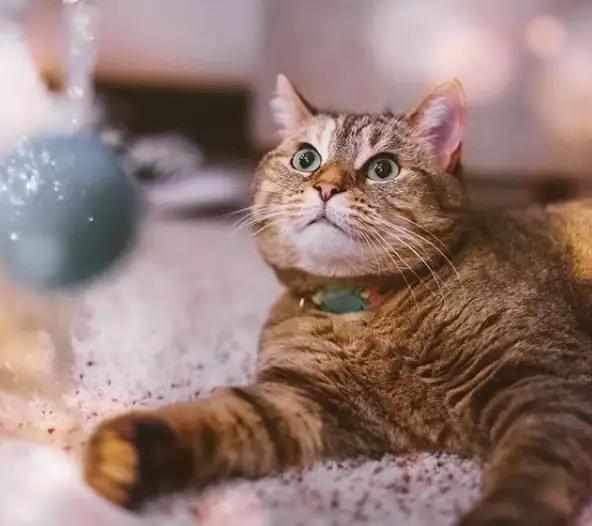
- Holiday lights and ornaments This applies to Christmas trees as well since we generally wrap them in strands of electric lights and beautiful, usually fragile glass ornaments, but often lights strands are used throughout the house, leaving lots of opportunities for sharp teeth to bite through the cords. NOT good! Aside from the obvious electrocution danger, damaged cords are a serious fire hazard. Shiny ornaments that fall from the tree (with or without the help of a paw) are highly breakable and won’t survive being chomped on or batted across the floor in play. We all know how razor sharp those slivers of glass are!
- Angel hair Two words: spun glass. If you’ve ever used this to decorate without putting on protective gloves first, you know how painful this pretty fluff can be. Even worse, it’s so lightweight when pulled apart that it floats in the air before settling, and can easily be inhaled or land in the eyes, a much worse problem than getting it in your fingertips! If you have pets (or small children) you may want to pass on this particular decorating item.
- Candles There’s nothing warmer in a holiday tableau than softly glowing candles, but an open flame is so obviously a potential hazard it almost goes without saying that the best practice is to snuff out the candles when you’re not in the room. If you celebrate Hanukkah, make sure to place the Menorah in as inaccessible a location as possible, at a safe distance from any highly flammable materials.
- Chocolate and other goodies The holidays wouldn’t be nearly so delicious without chocolate, and what a perfect time to indulge with all that’s on offer now. Hard as it is to believe, even a small amount of chocolate can be enough to ruin your pet’s holiday – a bite or two will cause gastric distress in dogs and cats, including vomiting and diarrhea, while a larger amount can actually be lethal. Early warning signs of theobromine poisoning (the chemical component of chocolate that’s toxic to pets) include vomiting, excessive thirst and hyperactivity, and if untreated it can lead to seizures and cardiac arrest.

Nuts are another no-no for pets, especially dogs. Although there are a few nuts that are not toxic to dogs, others can be very dangerous: walnuts, pecans, and macadamia nuts in particular should never be fed to your dog, and even non-toxic nuts can create blockages or lead to liver problems. The exception here is peanuts, which, as we all know and continue to find baffling, are not nuts.
Raisins also seem to be prevalent in holiday baking, and grapes are always attractive on a table laden with festive foods. Both are mysteriously toxic to both cats and dogs and should never be left out where they can get to them.
And what would the holidays be without eggnog! While not appealing to everyone, most people have it on hand this time of year, and sometimes it’s spiked with alcohol. Yum! However, both cats and dogs are attracted to the rich, creamy drink, but its high fat content is very bad for them, and if alcohol is a part of the mix that can be disastrous to pets. Just make sure all glasses are accounted for and not placed on a low table where a dog can quickly lap up a belly full of holiday cheer, as they won’t be cheerful for long.
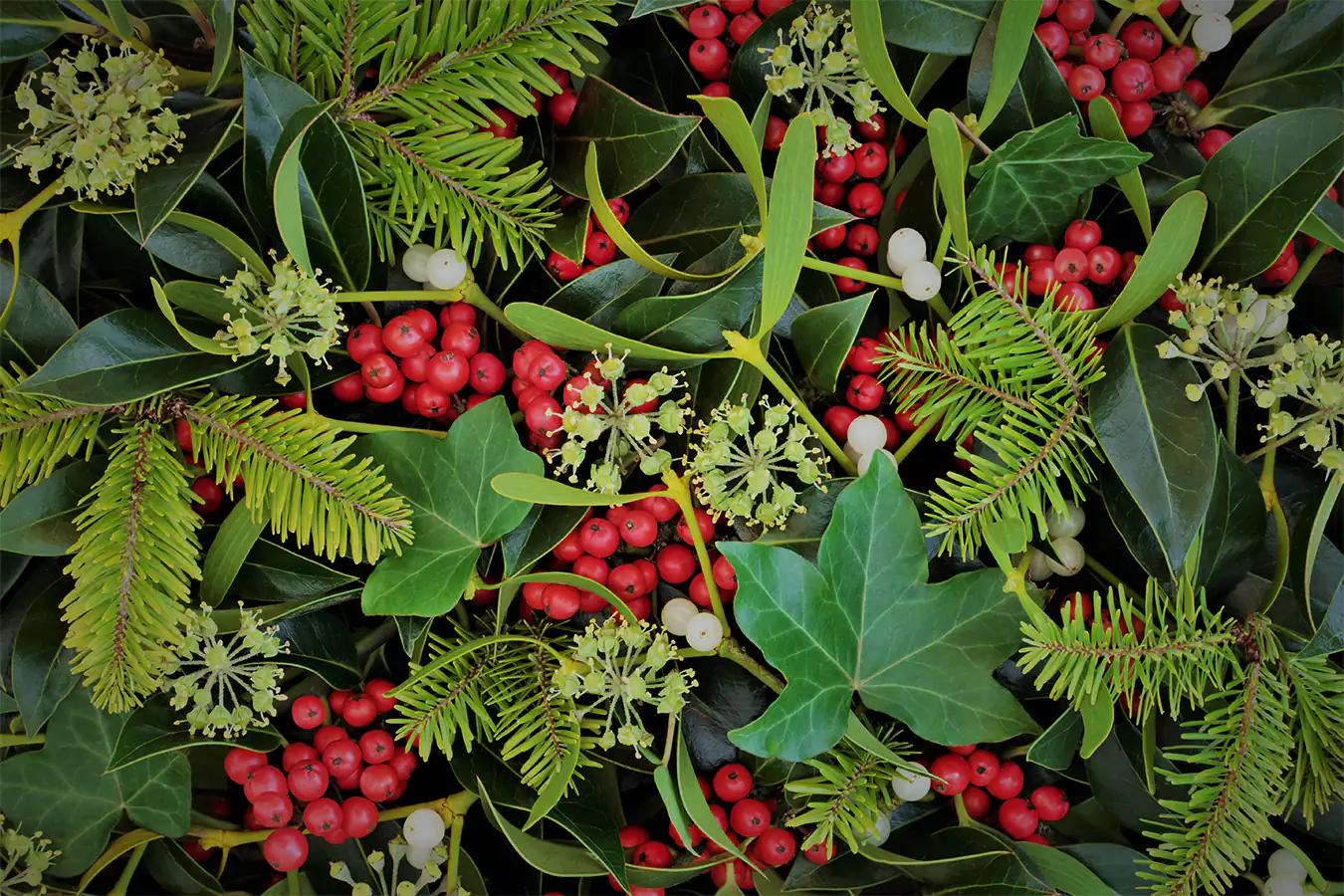
- Other plants and flowers Most pet owners already know about the highly toxic poinsettia plant, but it’s so prevalent during the holiday season that it really needs to be included here. Lesser known but also common holiday-related plants include mistletoe and holly, both of which can cause vomiting and diarrhea at least, and the toxins in holly, especially, can be fatal in some cases.
Now that all the cautionary tales are out of the way, let’s turn our focus to fun and creative ways to safely celebrate this holiday season. From the Pet Greens family to yours, we wish you peace, joy, prosperity and good health!